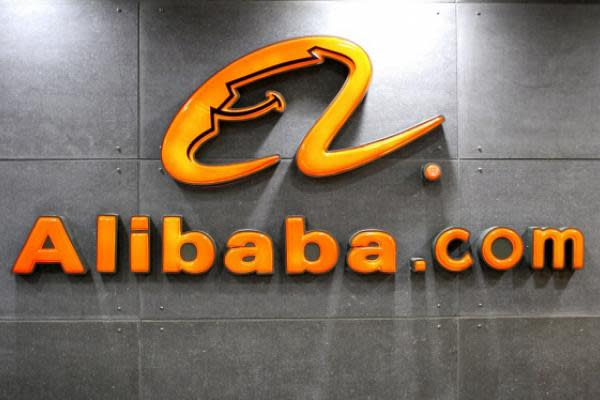Introduction
Alibaba Group Holding Ltd. (NYSE: BABA) is one of the biggest Chinese technology conglomerates, which has captured the interest of international investors during the last decade. Depending on your circle, you might commonly call it Baba stock, but it is not only an e-commerce giant; it is also a diversified business turned into an ecosystem, such as in the areas of financial technology, digital media, logistics, and cloud computing.
The paper tracked the meteoric rise of Baba stock from its historic IPO day to the numerous regulatory pressures, recovery plans, and so on. In this case, we are going to examine the eight facts that constitute its performance pathway and serve as a good lesson to retail as well as institutional investors.
Alibaba’s initial public offering (IPO) broke all previous records
In 2014, when Alibaba was launched on the New York Stock Exchange, it raised a sum of 25 billion, making it the largest IPO in the world. Not only did this make Alibaba a global scene star, but it also made the BABA stock an absolute player in the international market. It showed that investors have faith in China’s developing digital economy.
The growth potential of cloud computing
One of the fastest-growing segments is the company Alibaba Cloud, a company in the field of cloud computing. It is the market leader in China and is one of the leading in the world market. This expansion outside the field of e-commerce increases investor confidence and demonstrates that Baba stock is connected to high-growth areas outside of retail.
The stock price has been quite volatile
Baba stock has passed through the highs and lows over the years. It has proven to be a ride on the up and down, with highs during pandemic-related e-commerce and plunges after regulators cracked down on them in China. Nonetheless, its prospects in the long run still draw attention.
Good Revenues Notwithstanding the Regulatory Forces
Nevertheless, in spite of the increased regulation exercised by the Chinese authorities, Alibaba has continued to drive strong revenue. Its resilience and flexibility have been translated into its quarterly earnings, particularly in cost optimization and investments in strategic business units. This advantage augurs well with a long-term bullish outlook in Baba stock.
Globalization Is Riding on Growth
Alibaba has expanded into South Asia, Europe, and Southeast Asia by using websites like AliExpress and Lazada. Such geographical diversification lessens its reliance on the Chinese local market. This is being interpreted by the investors as a stabilizing aspect of the Baba stock against the uncertainty in the region’s market.
The Buybacks Are Corporate Confidence Indicator Shares
Over the past few years, Alibaba has carried out massive repurchases of its stock, indicating that the management is under the impression that the stockholders of the company are undervaluing the company. Such action usually raises the spirits of investors and has the potential to raise the earnings/share. It is a good sign for the long-term valuation of Baba stock.
Business Efficiency Is Enhanced in AI Integration
Alibaba has also invested a lot in artificial intelligence in logistics, e-commerce personalization, and cloud services. This promotes cost-effectiveness and user experience, which provides a technological advantage. This is because such innovations also entrench the growth story of Baba stock.
The New Potential with Strategic Reorganization
In 2023, Alibaba planned a significant organizational restructuring that would separate into several business units with independent CEOs and potential IPOs. Such evolution has the potential to generate some type of “secret value” and improve business agility, and is a critical point in the history of Baba stock.
Key Features Table: Baba Stock Performance Insights
| Feature | Detail |
| IPO Year | 2014 |
| IPO Amount Raised | $25 Billion |
| Core Revenue Sources | E-commerce, Cloud, Digital Media |
| Cloud Market Rank | #1 in China, Top 3 Globally |
| Volatility Drivers | Chinese regulation, Global market shifts |
| Share Buybacks | Ongoing, multi-billion-dollar repurchase programs |
| Strategic Markets | Southeast Asia, Europe, South Asia |
| Reorganization Benefits | Agility, separate IPOs, enhanced investor value |
FAQ’s
Q1: Why then is Baba stock volatile?
Baba stock has shown volatility as a result of a combination of both external and internal considerations (including Chinese government regulations and the world economy changes, along with Baba earnings reports and restructuring).
Q2: Are there sectors that affect Baba stock the most?
The Baba stock performance is greatly affected by e-commerce, cloud computing, and fintech. Its revenue diversification assists in moderating the volatility of its sectors.
Conclusion
The Baba stock performance has been by no means ordinary. Its high-flying IPO and recent restructuring in the last few years have made it a stock that packs volatility and opportunity in one. Shareholders who are long-term oriented will be more than pleased with Alibaba’s focus on innovation, globalization, and corporate reorganization.
These eight interesting facts about Baba stock generalize the dynamic nature of the stock and its changing potential. With technology causing a revolution in many industries and the world markets constantly transforming, it may be interesting to monitor the new steps by Alibaba to gain valuable insights into investment.








y3uulq
3ouj9l
xfry10